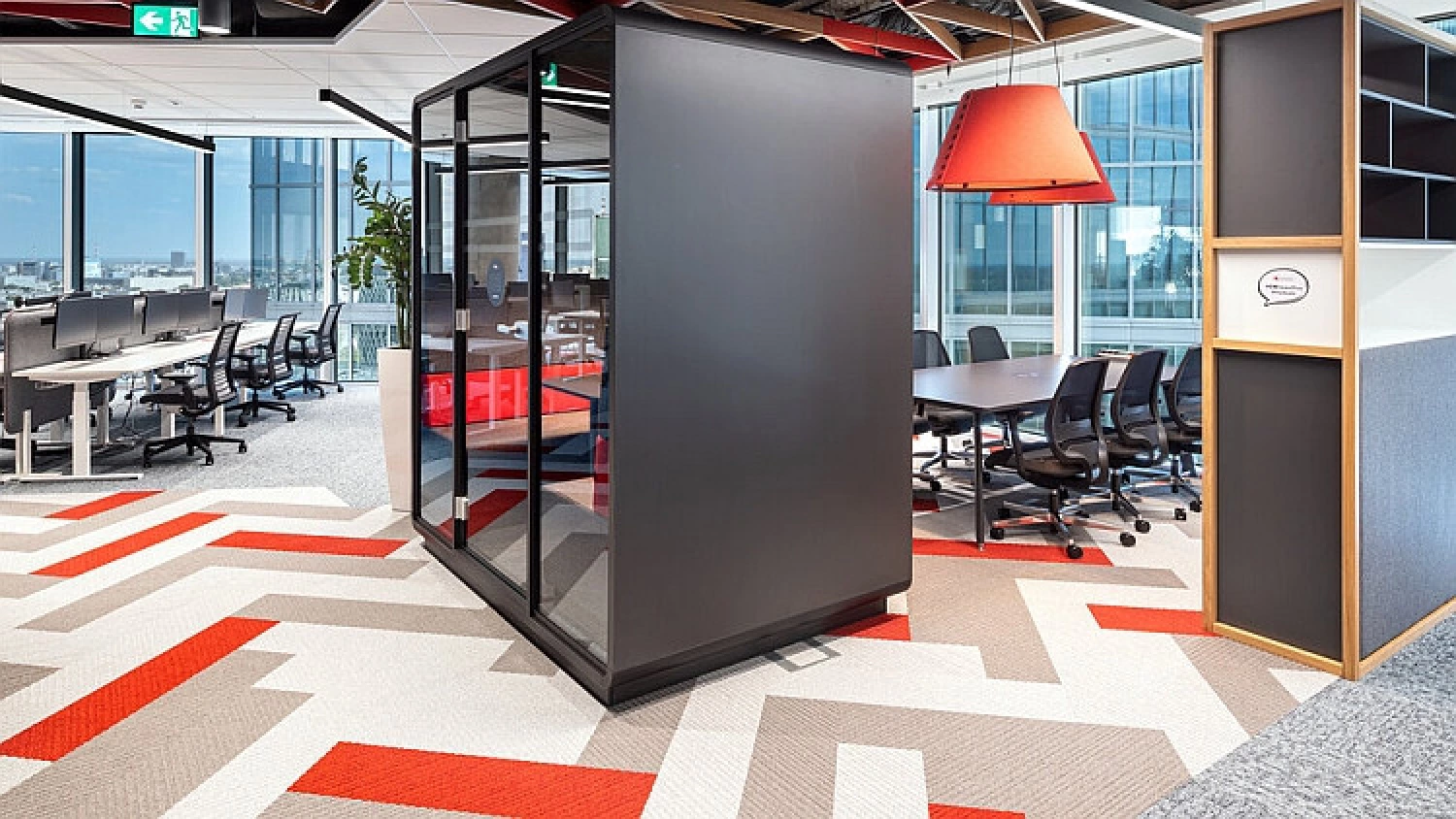
Workplace adaptation to hybrid working, sustainability and inclusion are some of the biggest office trends and buzzwords at the moment. The implementation of these elements in a new office is, however, a challenge, especially in the current macroeconomic situation. Employers want to bring employees back to the office, while optimising rising costs. According to Cushman & Wakefield’s latest report, medium-quality fit-outs in Warsaw are priced at an average all-in rate of €1,250 per square metre – almost the same as in Prague or Budapest but half of what average fit-out costs are in London and Hamburg.
Office fit-out budgets are undeniably impacted by macroeconomics. Recent years have been a rollercoaster of change for companies. However, the second half of 2023 brought a long-awaited stabilization of energy and building materials prices which had soared in 2022. Key cost drivers now include supply chain disruptions, elevated labour and transport costs, and high inflation.
Cushman & Wakefield analysed average office fit-out costs in 43 key cities across EMEA to provide an all-in section including fit-out, furniture and IT systems, and professional services which, for instance, in Warsaw account for 63%, 15%, 12% and 10% respectively. By comparison, in Budapest, furniture costs are 10% higher but professional services make up only 6%. In Hamburg, furniture and IT account for a large proportion of all-in costs, leading to a greater focus on economizing on fit-out.
"Due to economic instability, optimising expenditure budgets has become fundamental to sound management. The need to evolve and innovate has not diminished – on the contrary, many processes have accelerated. Having set ambitious social and environmental targets, companies are testing various modes of working, while at the same time fostering inclusion and diversity. The office is central to many of these transformative processes, with increasing focus on its quality”, says Andrew Frizell, Head of Project & Development Services, Cushman & Wakefield.
Redefining the office
Cushman & Wakefield also surveyed employees about what they thought the advantages of the office were. 65% of respondents said that the office was a place for human connection - almost equally important were its uses as a place for focused work and maintaining energy. According to approximately 50% of respondents, other benefits included work-life balance and well-being. In addition, for some employees the office still provides better access to tools and resources. These factors necessitate a change in mindset towards the office fit-out and overall workplace experience.
"The changing value of the office is looked at in terms of its role in fostering human connection and work-life balance. Workplace experience needs to be enticing enough for people to visit the office regularly. This means occupying the right building in a well-connected location and featuring modern solutions ensuring ESG compliance - an important element of a workplace strategy and change management in an organization. In office design, a greater proportion of space is being devoted to employee well-being and supporting individual needs. Environmental psychology, neurodiversity and inclusivity are becoming increasingly important in office design, reflecting growing expectations of the workplace”, explains Mariola Bitner, Head of Workplace Strategy, Cushman & Wakefield.
The path to net zero
The momentum behind sustainability continues to gather pace. Science Based Targets Initiative (SBTI) maintains a database of over 7,000 companies taking action on climate change. Within that dataset, 99% of those that have set Net Zero targets have done so since 2022. In addition, real estate companies are increasingly applying for globally recognised accreditation such as BREEAM, LEED, WELL and Fitwel. The criteria of such certification schemes continue to be adapted to evolving international regulations to foster sustainable business practices.
Multi-criteria certification systems go beyond reducing emissions. The sustainability credentials of a building which are measured during the certification process are also impacted by its effect on the health and wellbeing of its users, their productivity and creativity, and on the local urban and social fabric.
"Efficient and sustainable buildings significantly support tenants in achieving the environmental and social goals of their ESG agenda. That’s why landlords and managers are also intensifying efforts to meet the requirements of building users in addition to trying to achieve their own strategic corporate goals. This creates the opportunity to create a partnership that can include the use of technologies supporting data collection, sharing and analysis, the adoption of green leases and upgrades. Energy efficiency, water conservation and other such solutions also allow for optimising operating costs for all the parties”, explains Katarzyna Lipka, Head of Strategic Consulting and ESG, Cushman & Wakefield Poland.
Budget optimisation
The pressures of the rising costs of materials and professional services are increasing the need for optimisation. There are, however, areas where expenditures can be reduced without compromising quality or functionality. This includes choosing alternative but equally good fit-out materials or taking a well-thought-out approach to resource management during project delivery. Nevertheless, it is inadvisable to economise on energy-saving technologies, high-quality and durable materials or solutions providing a comfortable user experience in the long term. As well as bringing benefits now, such investment will also generate savings and efficiency in the longer time frame.
"Given the importance of sound cost management, we are seeing a growing demand for high-quality spaces, with tenants however opting for smaller offices. We expect this trend to feed into an increased flight to quality in fit-out contractor hiring. At Cushman & Wakefield we provide workplace strategy, project management and design & build services, whilst drawing on the synergy of our teams and their experience to ensure that a project’s budget is aligned with the client’s financial capacity”, comments Andrew Frizell.



